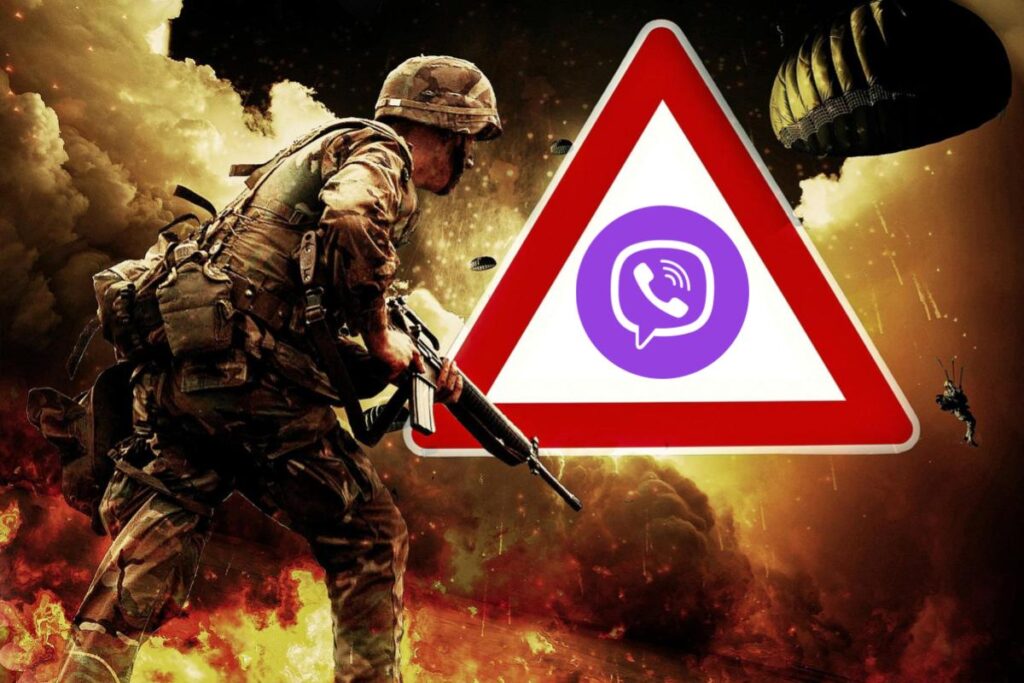The war on Ukraine has intensified the importance of chat and encrypted messaging apps (EMAs). Ukrainian users rely on these apps for up-to-date information and advice on personal safety and public health, but they are also central to the propaganda war and are being manipulated by both sides. EMAs are used widely in Ukraine: Viber appears to be the most popular chat or encrypted messaging app, with Telegram second and Facebook Messenger third (with penetration rates of 98 percent, 86 percent and 76 percent, respectively).
These apps are especially effective for spreading Russian propaganda in Ukraine, but the apps are also used widely in Russia, where they are exploited to spread propaganda that focuses on Russia’s domestic audience. Russian users spend more time on Telegram than the global average, and the current war has made the app more important for both activists and pro-government media. For instance, Russian propagandists exploit the dissemination of disinformation on Telegram by re-reporting it as “leaked” information on Russian state channels that amplify the false claims. At the same time, Telegram has established itself as a way for Russian activists to access independent information after the Russian government shut down the few remaining independent news channels.
Propagandists adapt to changing circumstances, and how they use these new technologies will likely change over the course of the conflict. What is clear so far is that EMAs will be an important medium for actors fighting for control of narratives about the war. Ukraine and Russia are taking different approaches, with Ukraine adapting its state-supported infrastructure on the apps for public messaging and Russia using the apps to source or spread new disinformation in support of its messaging campaign. The companies that run these apps are only just waking up to the ways their platforms are being used, and there is no clear path forward for preventing the apps’ exploitation for propaganda purposes. These apps are now a battlefield in their own way, representing a new normal for how propaganda wars are fought.
.
Ukraine: Adapting Public Communication for Wartime
.
The ubiquity of EMAs in Ukraine led to local journalists and politicians building new infrastructure for communicating to mass audiences on these platforms. This shift had been developing for several years prior to the invasion. These actors had begun relying on EMAs to offer their audiences “unfiltered” messages. Research that my colleagues and I conducted in 2021 at the Propaganda Research Lab at the University of Texas at Austin’s Center for Media Engagement captured how Telegram and Viber in particular had grown in importance for political messaging by Ukrainian leaders. A Ukrainian academic who advises politicians on effective communication with citizens told us in an interview that “Telegram is the major source that brings politically relevant information” to the Ukrainian public, as most major news outlets, parties and individual politicians have their own Telegram channels with large numbers of subscribers.
Over the past two years, the Ukrainian Ministry of Health’s coronavirus communications relied heavily on Telegram and Viber. Following the Russian escalation, these established lines of communication were repurposed. The primary Telegram channel that was dedicated to reliable coronavirus news in Ukraine is run by a private company but works closely with the government and is verified by Telegram. The channel asked whether subscribers wanted updates on the latest “socio-political” news. Following a positive vote, the channel changed its purpose and has since mostly provided updates on the war. This exemplifies a radical change, with a nominally nonpolitical channel shifting to become an important tool of citizen communication during wartime. The existing EMA infrastructure—which journalists relied on to identify news stories and politicians used for political campaigning—has become vital for Ukrainians trying to find the most recent information and analysis about the conflict.
On EMAs, as in other media, it can be difficult to distinguish between nonpolitical communication and reliable information on the one hand, and propaganda built on half-truths or even lies on the other. Russia was already aware of the importance of Telegram for the Ukrainian public prior to the invasion and used anonymous Telegram channels and other propaganda strategies on these apps to push its agenda. For example, after Ukraine banned the Russian Sputnik V vaccine in 2021, Russia increased personal attacks targeting key Ukrainian politicians, including President Volodymyr Zelenskyy and the Ukrainian minister of health, on Telegram channels that were purportedly set up to share news by local journalists in Ukraine.
.
.
Political messaging on EMAs is part of a broader ecosystem of computational propaganda, which is a business in Ukraine as it is in any other country and includes Ukrainian political actors’ messaging to domestic audiences. One interviewee, who previously worked in the Ukrainian parliament but now works for a media nongovernmental organization, described to us how the earnings scale of “political consultants” running Telegram channels related to the previous Ukrainian president’s office depended on the subscriber numbers of channels they ran, which creates incentives for polarizing messaging and exploitative gimmicks. These apps are pervasive, but the information on these channels is as unreliable as other forms of social media.
Ukrainians are learning from their unfortunate history of having been attacked by Russia in the recent past. Both new and repurposed channels and groups on EMAs are now being used to provide practical information, from advice on safety to self-defense. Recently, Ukraine’s deputy minister for digital policies has turned to Telegram, setting up an “IT Army of Ukraine” group, which has reached over 260,000 members. Overall, Ukraine is capitalizing on its advanced digital ecosystem. Ukrainians are using these apps to push back on Russian propaganda and document the gruesome war for foreign audiences with the aim of fostering international support.
.
Russia: New Tools, Old Tactics
.
Russian propagandists have capitalized on the rising use of EMAs in Ukraine by setting up their own channels aiming to attract Ukrainian subscribers, with even the state broadcaster RT running Telegram channels. More than just an additional avenue for propaganda output, Russia’s state media have been relying on “leaked” videos, images and claims—often unverified or outright disinformation—from Telegram channels to fuel its propaganda. Despite coming from dubious sources pursuing their own agendas, Russian media use these so-called “leaks” to implicitly increase the legitimacy of their state-controlled channels by relying on what they claim is “authentic” input from Ukrainian citizens.
For example, a video from the Telegram channel of the DNR People’s Militia, a Russian-supported militant group operating in Donetsk, allegedly showing Polish-speaking attackers trying to blow up chlorine containers in separatist-controlled eastern Ukraine was picked up by Russian state media. TASS and RIA Novosti took the video and the separatists’ claims at face value and amplified them to a wider audience. Eliot Higgins, founder of Bellingcat, described the video as “the laziest, dumbest disinformation I’ve seen in forever.” However, by the time accurate, fact-checked information could spread, Russian state media had already moved on to the next news item. Even when fact-checking happens simultaneously, these corrections are unlikely to reach the audience on which it has the biggest effect: the Russian people.
Russian propagandists seek to counter two dynamics that have disrupted propaganda efforts since the Cold War. First, specific propaganda campaigns have become less effective due to the sheer increase in volume and related noise that adversely affects targeted campaigns. Second, propaganda has become harder to control than in previous eras when it was conveyed from the top down, from the professional news media to the public. Now, the emphasis of two-way communication in Web 2.0 makes a consistent message more difficult, but Russia is adapting by creating a disinformation ecosystem that seeds false reports and convenient narratives abroad through social media that propagandists can then seize on and claim as “authentic” reporting. In 2014, for example, the Internet Research Agency generated blog posts pretending to be first-hand accounts from inside Ukraine and ginned up comments to make them look real and generate traffic; we are witnessing similar tactics in the current conflict. These tactics and the exploitation of social media has increased the relevance of traditional journalism as an amplifier of disinformation operations—both because traditional journalism can promote these false claims, intentionally or inadvertently, and pass them on to a broader audience and because traditional journalism exposes how these disinformation operations work.
.
The New Normal
.
Propagandists and local activists have benefited from features that have made it more difficult to access EMA content—either to surveil or to fact-check. Telegram does not suggest trending topics to navigate its broadcast channels, which complicates finding problematic spaces, for instance. Also, users must request access to join private groups, and when communications are end-to-end encrypted this stands in the way of established content moderation regimes like the ones implemented by Meta. But interventions to limit the spread of disinformation can still be established by analyzing metadata, promoting verified information by the company or relying on third-party efforts.
The companies that run EMAs are aware that their platforms are being used as critical lifelines by some actors and exploited to spread propaganda by others, but their responses have been inconsistent. Nick Clegg, Meta’s president of global affairs, recently announced that the company would crack down on Russian propaganda, offer users in Russia and Ukraine encrypted direct messaging on Instagram, and demote Facebook posts by Russian state media outlets. The spread of false information on Telegram prompted its founder, Pavel Durov, to consider restricting access to the platform, and Signal’s creator, Moxie Marlinspike, tweeted a reminder to users that Telegram is not always end-to-end encrypted and leaves communications more exposed. WhatsApp’s Will Cathcart emphasized the app’s usefulness, tweeting that the State Emergency Service of Ukraine had launched a helpline on WhatsApp with the aim of providing advice on how to stay safe.
Combating propaganda is largely falling to journalists and open-source analysts. Local Ukrainian fact-checkers have increased their efforts on EMAs, as part of an ongoing process described to us by a Ukrainian journalist in 2021. VoxUkraine is one example; it has acted to counter Russian propaganda since 2014.
Identifying the creators of propaganda campaigns remains the greatest challenge. Propagandists can take advantage of online anonymity, automation and the scale of the internet to remain in the shadows as they sow deceptive political messaging. Manipulation and deception have always been part of politics, and no state or society will be able to eliminate them. Instead, new technological developments must be incorporated into existing analysis. With the global success of EMAs, the political manipulation of these chat apps is now a significant conduit for propaganda.
.
March 27, 2022 Published by The Lawfare Blog.







